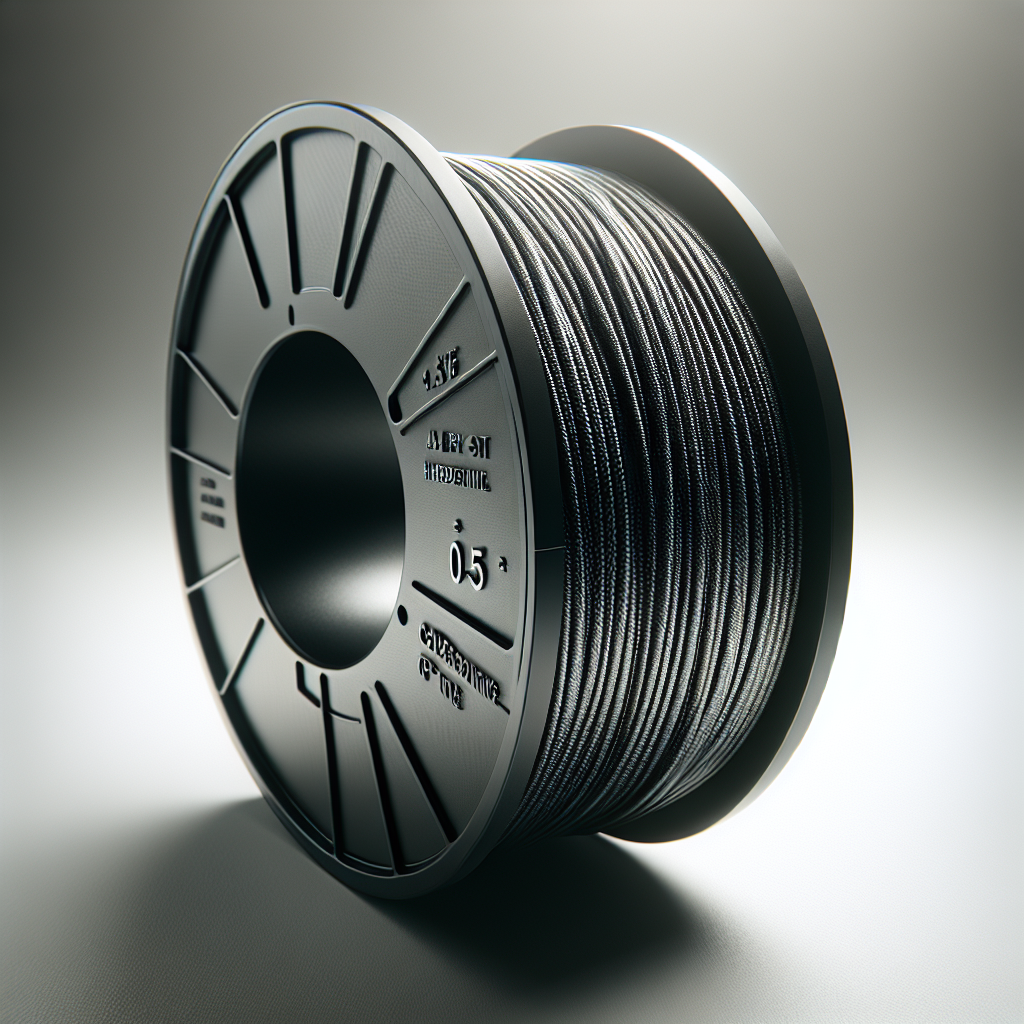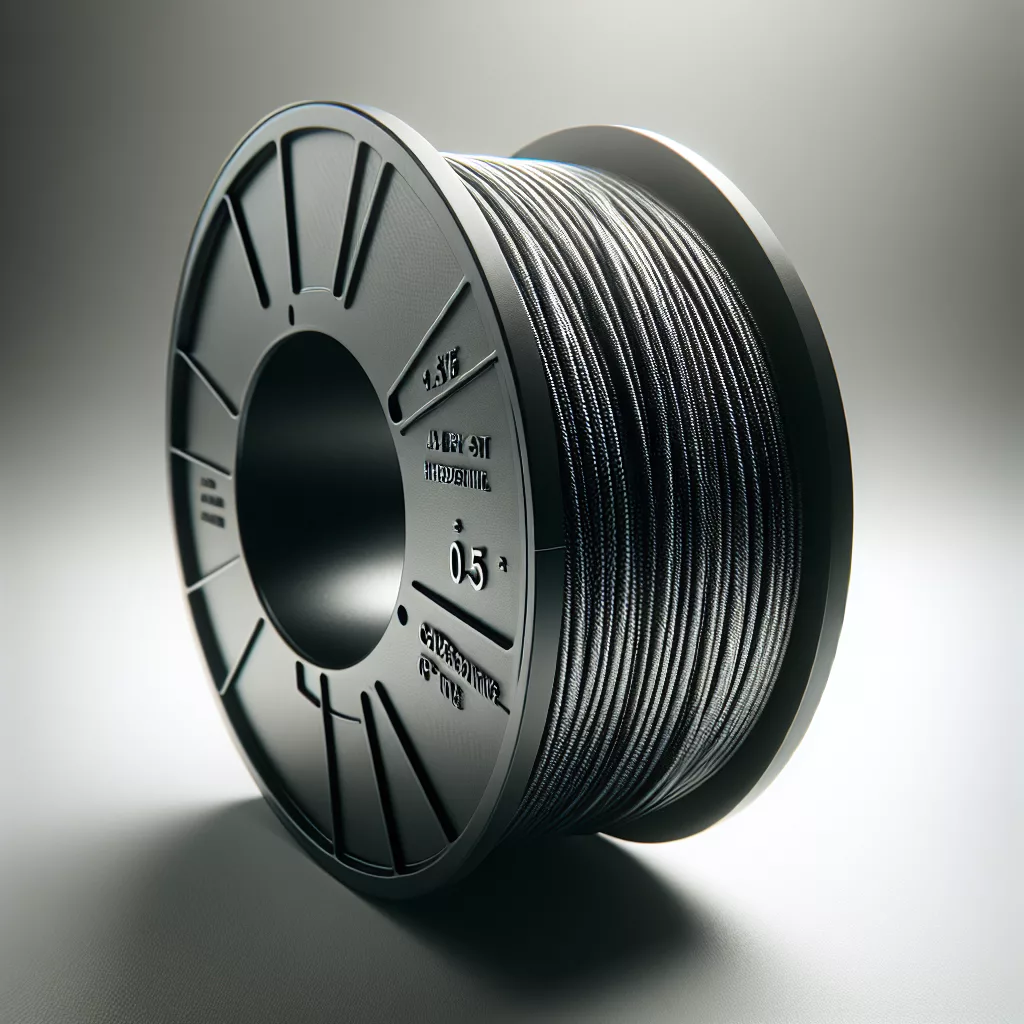Understanding Carbon Fiber Filament
Carbon fiber filament is a composite material that blends a base thermoplastic (such as PLA, PETG, or Nylon) with finely-ground carbon fibers. The result is a filament that boasts increased strength, stiffness, and a stunning matte finish. However, these benefits come with unique challenges—most notably, the increased risk of nozzle clogs during printing. Printing carbon fiber filament successfully requires some specialized know-how and setup. Drawing on years of hands-on experience, here’s how to keep your prints running smoothly.
Choose the Right Nozzle: Hardened and Wide Enough
The abrasive nature of carbon fiber is notorious for quickly wearing down standard brass nozzles, leading to deformed nozzle openings and frequent clogs. Replace your stock brass nozzle with a hardened steel or ruby-tipped nozzle. These nozzles are designed to withstand the abrasive fibers and maintain their internal diameter.
Additionally, use a nozzle with a diameter of at least 0.4 mm, although 0.5 mm or larger is even better. The carbon fibers can create blockages in smaller diameter nozzles—larger openings help prevent this.
Dial In Dry Filament Handling
Moisture is kryptonite for many filaments, and carbon fiber composites are no exception. Carbon fiber filament is especially prone to absorbing humidity, which causes popping, poor surface finish, and can even lead to partial clogs. Store your filament in a dry box with desiccant and, if possible, dry the filament in a filament dryer or oven (at the manufacturer’s recommended temperature) before use. Printing with dry filament reduces stringing and ensures consistent extrusion.
Calibrate Your Print Temperature
Each brand and base material for carbon fiber filament has its own ideal print temperature. Printing too cold can cause under-extrusion and clogging, while too hot may degrade the polymer, leaving residue in your hotend. Start with the manufacturer’s recommended range and run a temperature tower test. For many carbon fiber-filled filaments, a temperature between 240-270°C is typical, but always check your spool.
Optimize Retraction and Flow Settings
Carbon fiber increases the viscosity of molten filament, which impacts how easily it flows through your hotend. Here are my go-to slicer tweaks:
- Retraction: Minimize retraction distance and speed compared to standard PLA or PETG. Excessive retraction can create jams, as the chopped fibers easily catch within the nozzle.
- Flow Rate: Increase flow rate slightly (103-105%) to ensure enough material is extruded and to compensate for any die swell or under-extrusion caused by the fibers.
Keep Your Hotend and Extruder Clean
Before switching to carbon fiber filament, clean your hotend by running a cold pull with nylon or cleaning filament. After several spools of carbon fiber filament, repeat the process to remove any residue buildup. A clean pathway will minimize jams and prolong nozzle life.
Maintain Proper Extruder Tension
Carbon fiber filament is stiffer and more brittle than pure polymers. Too much extruder tension can grind the filament, creating dust that clogs your hotend. Too little, and you risk inconsistent extrusion. Adjust your extruder tension so it grips the filament securely without deforming it. Periodically clean your extruder gears to remove any accumulated dust or debris.
Upgrade to an All-Metal Hotend
Many stock 3D printers ship with PTFE-lined hotends, which are unsuitable for the higher temperatures required by carbon fiber filament. Upgrade to an all-metal hotend to handle the increased heat, prevent PTFE degradation, and reduce the risk of internal clogs.
Slow Down Print Speed
While it’s tempting to speed through prints, carbon fiber composite filaments perform best at moderate speeds (30-50mm/s). Slower printing ensures consistent melting and smooth flow, reducing the likelihood of clogs.
Conclusion: Proactive Printing Pays Off
Carbon fiber filament unlocks new possibilities for strong, lightweight, and professional-quality 3D prints. However, it demands respect and preparation. Use a hardened, wide nozzle, keep your filament dry, fine-tune your slicer settings, and maintain your printer’s hardware. With these best practices, you’ll enjoy consistent, trouble-free printing and unleash the full potential of carbon fiber composites—minus the frustration of clogs.


Leave a Reply